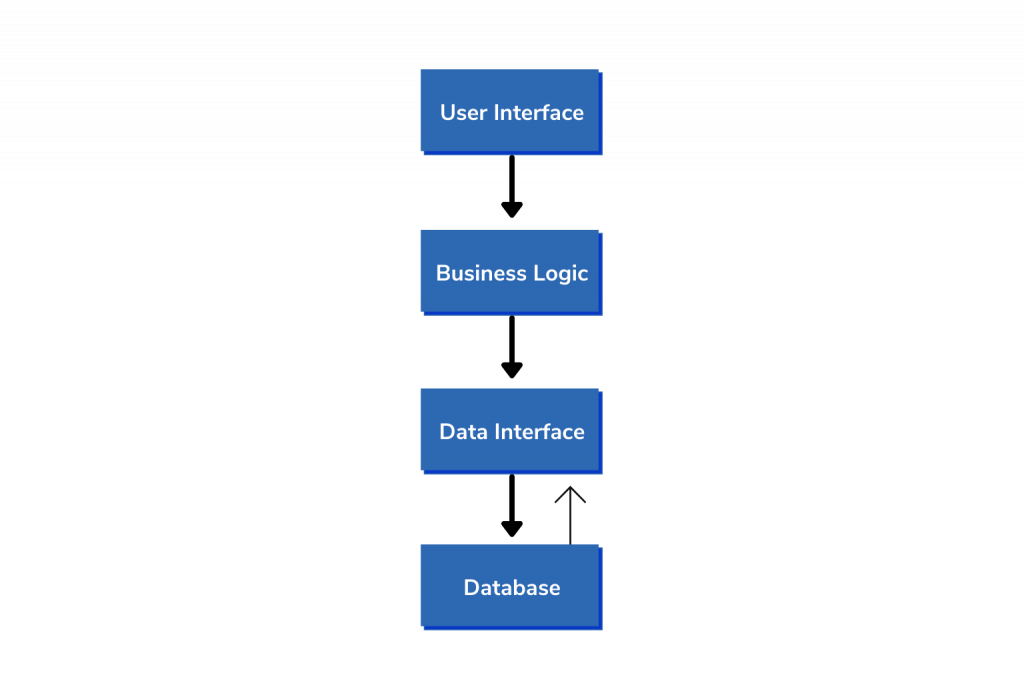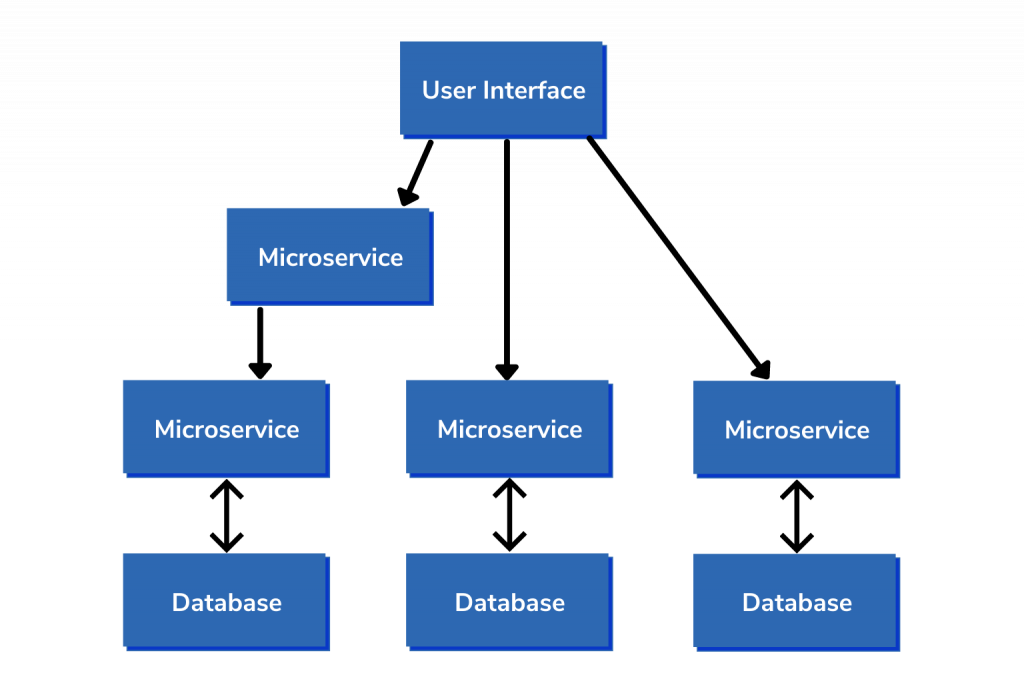The post Effortless Scaling, Real Savings: Why Serverless Computing Is Revolutionizing the Web appeared first on Annexbyte.
]]>What is Serverless Computing?
Think of it like a cab service that appears at a snap of your fingers, ready to whisk you away without the hassle of ownership. Serverless computing mirrors this on-demand convenience for your digital needs, offering a seamless, pay-for-what-you-use approach that adapts resourcefully to your website’s live audience.

Why Businesses Are Paying Attention to Serverless
Businesses are flocking to serverless for some pretty convincing reasons:
- Cost-Effectiveness: The serverless model is a financial game-changer. It’s like paying for just the water you drink, rather than the whole well. By only billing for the resources utilized, serverless computing puts a full stop to wasteful spending.
- Simplified Operations: Say goodbye to the endless cycle of maintenance and updates. Serverless takes the back-breaking server management off your plate, freeing your team to innovate and excel where it truly matters.
- Scalability: Serverless is like a beanstalk that grows to the clouds or shrinks to a sprout exactly when needed. This nimble scaling means your site can handle traffic surges without breaking a sweat.
- Eco-Friendly Footprint: By maximizing resource efficiency, serverless computing is a nod to a greener planet, reducing the energy drain associated with idle servers.
How to Get Started with Serverless?
If you’re intrigued by the serverless buzz and wondering how to jump on the bandwagon, you’ll be pleased to know that getting started is as easy as pie. Here’s how you can roll up your sleeves and begin your serverless adventure:
Step 1: Find Your Serverless Playground
The first thing you need is to choose where you’ll build your serverless application. Think of it as picking out the perfect lot to build your dream home. You have a few good neighborhoods to choose from—AWS Lambda, Azure Functions, and Google Cloud Functions are some of the popular spots. Each offers its own set of tools and toys to play with, so pick one that seems most welcoming and has the most helpful guides and tutorials for beginners.
Step 2: Take the Guided Tour
Just like visiting a new city, you’ll find guided tours immensely helpful. Each serverless platform comes with its own set of tutorials. These are like your travel guidebooks, showing you the sights – or in this case, teaching you how to deploy your first piece of serverless code. It could be something simple like a function that sends an email when someone fills out a contact form on your site.
Step 3: Guide Your Project with Training Wheels
Now that you have the lay of the land, start with a tiny project. Think of it as your first garden—small, manageable, but full of potential. A great starter project is a serverless image-resizing function—every time you upload a photo, it automatically adjusts it to the perfect size for your website.
Step 4: Grow Your Community Roots
Remember, even if you’re new to the neighborhood, you’re not alone. There are plenty of serverless meetups and online forums. Joining these communities is like having a neighborhood block party where everyone shares their best recipes—only these recipes are for code!
Step 5: Expand Your Construct with Confidence
With a bit of experience under your belt, you can now expand your project or start new ones. Maybe you’ll build a serverless backend for a mobile app or a system that processes payments for your online store. As your confidence grows, so can the complexity of your projects. Remember, the sky’s the limit!
Step 6: Stay Vigilant and Keep Learning
Just as with any new endeavor, there will be learning curves and potholes to avoid. Keep a keen eye on the costs of your serverless architecture and always prioritize securing your applications. As the serverless technology evolves, keep updating your skills through continuous learning.
Real-Life Magic with Serverless:
Here’s where theory meets practice: real businesses making serverless work for them.
- A travel agency uses serverless to only run their booking system when someone is using it, cutting down on costs during off-peak times.
- A food delivery app manages orders by spinning up serverless functions to match demand during lunch and dinner rushes, and scales down when it’s quieter.
These aren’t just hypothetical scenarios; they’re actual cases where serverless computing is making operations smoother, more scalable, and cost-effective.

Wrapping It Up
Starting with serverless doesn’t require you to be a tech whiz or a large enterprise. It’s for anyone looking to simplify their web services and embrace a future-proof way of building on the web. By following these steps and looking at how others are doing it, you’re on your way to enjoying the benefits of serverless computing: more time to focus on what matters and less on the technical heavy lifting.
The post Effortless Scaling, Real Savings: Why Serverless Computing Is Revolutionizing the Web appeared first on Annexbyte.
]]>The post Why are Industries turning to Microservices? appeared first on Annexbyte.
]]>Microservices – the world became familiar when this term was coined in 2011. Because of the results it yields, a large percentage of the tech giants and other companies are already making use of it. If we look at a survey conducted by Nginx, almost 36% of the organizations they included in the survey were already using it. Not only this, 26% were thinking of migrating to it.
But what is all the hype about? Why are microservices taking over the traditional architecture of app/software development? In this article, we will discuss what microservices are and why the companies are turning to them? Before we discuss what microservices are, let’s look at monoliths, the architectural framework used before them
What are Monoliths?
It was a multi-tier, centralized architecture of app/software development. The entire coding was done from one place, and the code was centralized. Before the advent of the cloud and mobiles, this was the best way to code. The development was done through one desktop. It was one unified unit.

If any change was to be made, you had to update the entire app. This exposed the code to bugs and malware. The biggest disadvantage was that there was no functional scalability. It was not possible to scale only one function. Yes, you couldn’t add or delete a function. You had to go ahead and scale the entire app. This would result in extremely high costs. The microservices came into being to curtail all these problems.
What are Microservices?
Microservices break down the code into different, independent services. Each service is run as an entirely different process than the others. There is no interdependency. In this way, you can work on different parts of the code at the same time.
The result of one service is the input of the other service. This makes the development process more manageable, smoother, efficient, and does not burden one person. This is excellent for businesses today. To be honest, change and innovation are the need of the day. Companies can’t say that the app they have made is perfect and will not need any change.
Each service in this architecture has its own business logic and database independent of the other services. It is platform and device-agnostic. This is why it helps businesses provide their customers with the best user experience on different platforms. PayPal, Twitter, Netflix, eBay, and Amazon are just some of the names already using microservices.

Reasons Why Industries Are Turning to Microservices
1. Scalability
One of the most apparent benefits is the scalability option. This is because each service is a separate entity. Tools like Kubernetes allow you to scale functions independently. This increases the efficiency of your app. It will save time and a lot of money. When one service is being changed, there will be no impact on the other one.
2. Flexibility and Adaptability
You are not bound by anything. The beauty of microservices is that different technologies can be used to develop different services. Teams can decide which framework and programming language they prefer. Different parts of the application code can have different languages.
An excellent example can be The Guardian. When an event ends, they can easily remove it without changing anything on the website.
3. Quicker Market Availability
The concept being microservices is loosely coupled services. This allows you to make changes to specific parts if needed. There is no need to write the entire code again just to modify a single feature. Another important thing is that testing, debugging, and improving smaller units is easier than the entire code. It takes less time and effort.
This allows the app to be developed faster. All the microservices are independently deployable and testable. This cuts down the time to make it available to the users.
4. Continuous and Consistent Delivery
A continuous delivery model is used in microservices. There are dedicated, specialized, and small teams working on different services to keep the life cycle of app development working. It is a continuous process.
Everyone is working simultaneously. Developers, testers, and operations team working side by side allows for faster and better debugging. This allows for the development to keep going on regardless of any error. Another advantage is the code presence in the library. You don’t need to develop new codes from scratch. You can always use a code from the library instead of inventing a new one.
5. Better Team Collaboration
With it, team efficiency is optimized. You can hire special team members keeping in mind their capabilities and expertise, to work on one service. They can do what they do best. “Too many chefs ruin the broth,” this is true in this case. When a large number of people are working on one code, it can get complicated.
This was one of the major reasons Netflix decided to shift to microservice architecture. They hired 25 engineers to work on one project. The sheer number of engineers resulted in many difficulties. The people were finding it difficult to work with each other. By making use of microservices, the team was divided into smaller units.
Wrapping Up
Undoubtedly, microservices are the future. It is cost-effective, efficient, and practical. But this does not mean it does not have its limitations. Businesses can’t shift to this architecture overnight. You need to have the proper tools and services in place.
Robust monitoring is essential. Continuous development required continuous monitoring. You need to have proper measures in place to avoid any issues. Lastly, keep in mind that you can go overboard. Don’t unnecessarily break down services just for the sake of it. It can cost you more. In a nutshell, if done properly, microservices are highly beneficial.
References
https://www.plutora.com/blog/understanding-microservices
https://wiredelta.com/10-reasons-why-microservices-are-the-future/
https://www.cio.com/article/3201193/7-reasons-to-switch-to-microservices-and-5-reasons-you-might-not-succeed.html
The post Why are Industries turning to Microservices? appeared first on Annexbyte.
]]>